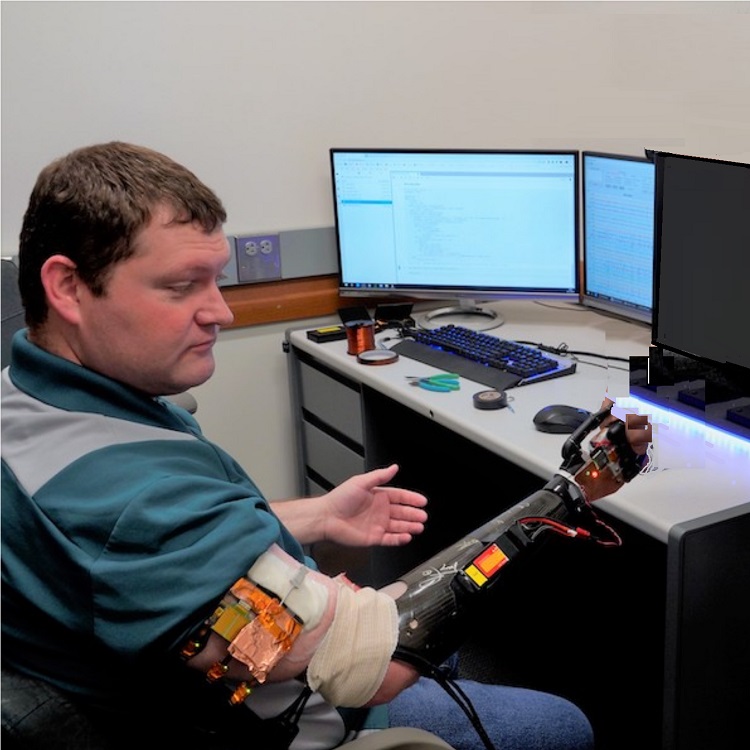Biomedical engineers at the University of Minnesota may have grabbed the bionic brass ring: a smart prosthetic arm that amputees can control with their minds.
The as-yet unnamed device operates with an implantable sensor that attaches to peripheral nerves in the residual limb. The sensor transmits signals from the brain to the prosthesis, enabling users to intuitively move individual fingers, change grips, and execute basic manual tasks.
Minnesota’s system is less invasive than other brain-to-bionics technologies, which rely on sensors implanted within the brain. And its learning curve is less demanding than devices using targeted muscle reinnervation (TMR) or other neural interfaces. Although the technology is multiple steps removed from being available to consumers, there’s still plenty of reason to cheer.
“It’s a lot more intuitive than any commercial system out there,” says Jules Anh Tuan Nguyen, a postdoctoral fellow in Minnesota’s bioengineering school. “With other commercial prosthetic systems, when amputees want to move a finger, they don’t actually think about moving a finger. They’re trying to activate the muscles in their arm, since that’s what the system reads. Our technology knows the patient’s intention. If they want to move a finger, all they have to do is think about moving that finger.”
The University of Minnesota system is equipped with artificial intelligence, so it becomes more accurate over time. Users can train the prosthesis to respond with increasing precision, as the implantable neurosensor gets better at interpreting brain and nerve signals.
“Artificial intelligence has the tremendous capability to record nerve data,” explains Zhi Yang, another member of the development team and a professor of biomedical engineering at the University of Minnesota. “With that kind of nerve data, the AI system can fill in the gaps and determine what’s going on. That’s a really big thing. It can help answer a lot of questions we couldn’t answer before.”
It will likely take several years before Minnesota’s mind-controlled prosthesis is ready for commercial sale. But Yang is already looking far beyond that point. He believes the simplicity of this neural interface makes it ripe for adaptation to devices that benefit not only amputees but also patients who suffer from neurological disorders and chronic pain. Future iterations might even have applications for boring old able-bodieds. For example, if the neurosensor were connected wirelessly to a device other than a bionic arm—a car or phone, for example—people might eventually be able to control all sorts of machinery with their minds.
“This technology was designed for amputees, but it could be applicable to all of us,” Yang says. “A lot of research is moving from the so-called ‘fantasy’ category into the scientific category. Some of these things are actually happening.”
You can see the University of Minnesota’s mind-controlled robotic arm in action here.
